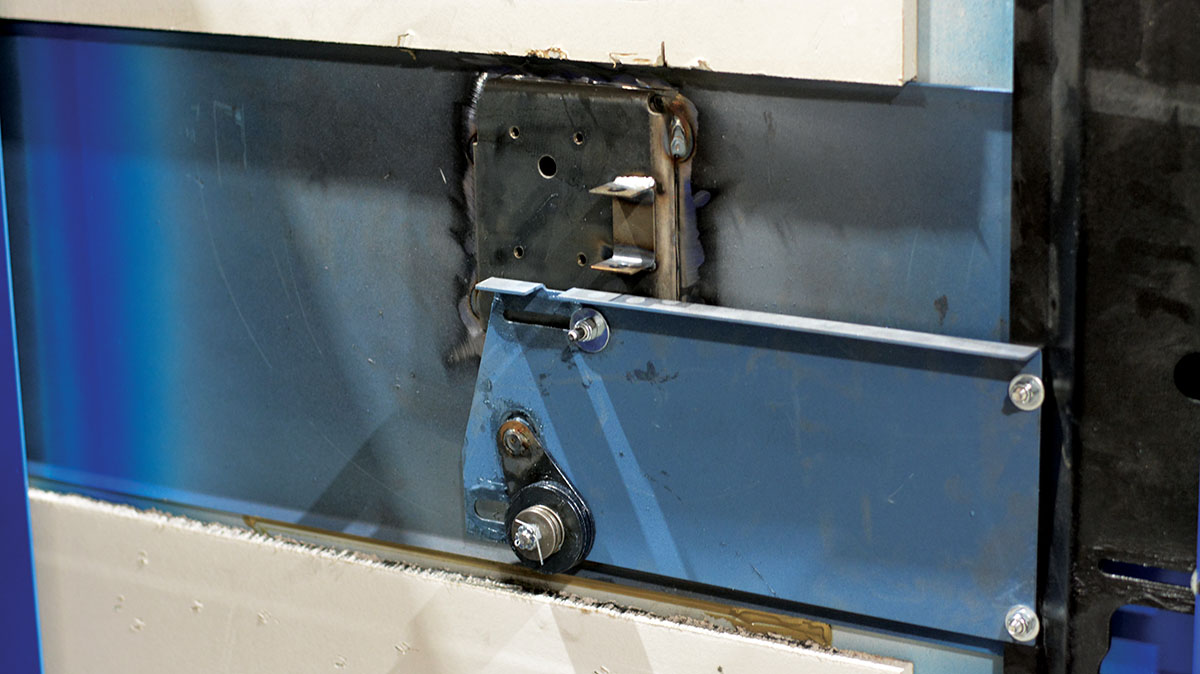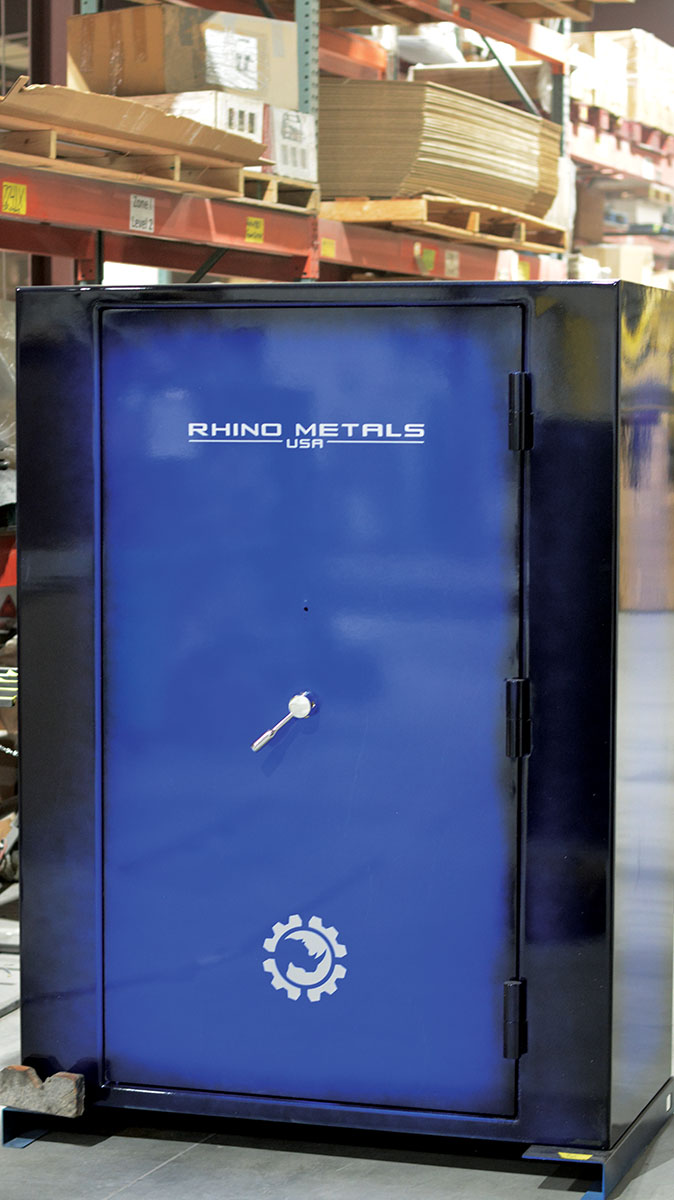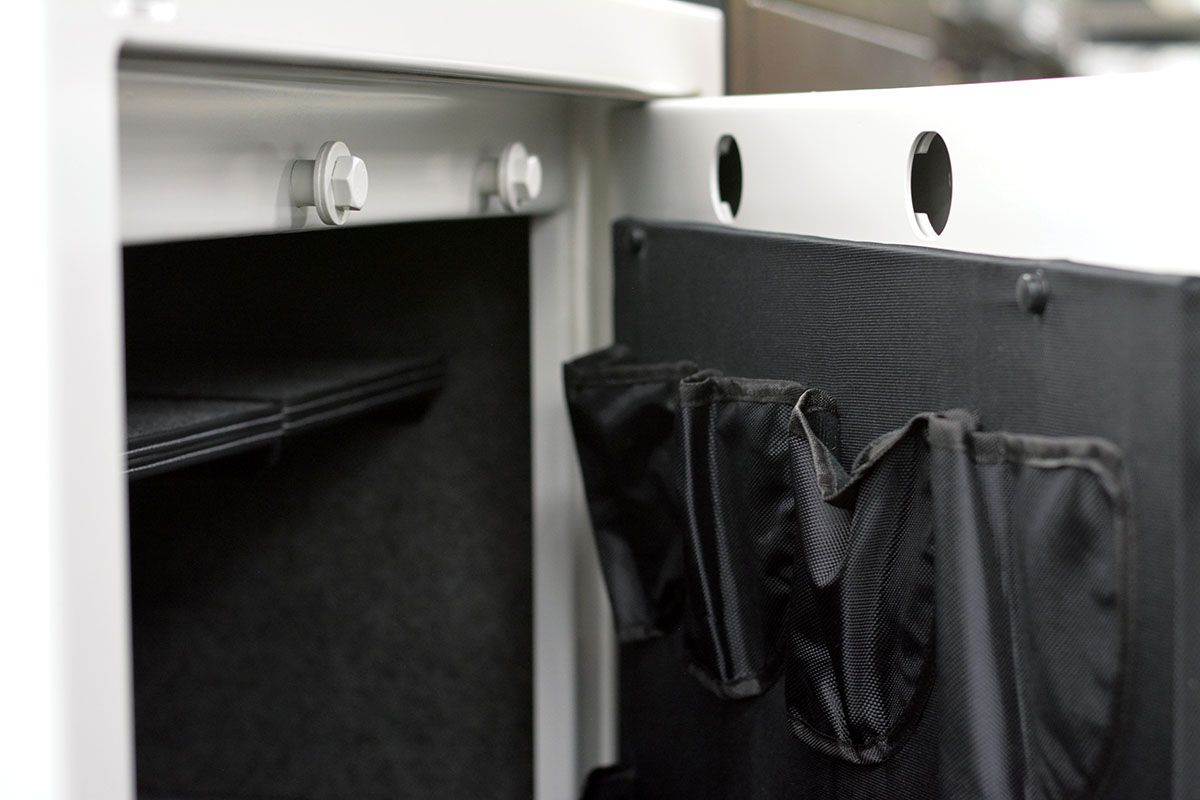Mostly Long Guns
Gun Safe Buying Tips
column By: Brian Pearce | November, 24



Safes offer various levels of protection from theft and fire. Generally speaking, the higher the cost, the better overall protection that it offers, but not always. It wasn’t that many years ago that practically all gun safes sold in the U.S. were manufactured right here at home. But in the past couple of decades, imported versions seem to dominate the total number of safes sold. Manufacturers tell me that this is due to critical price points. To the average consumer, most of these moderately-priced safes appear like they will keep burglars on the outside, but some are far too easy to break into. In some instances, they can be broken into in less than 1 minute, so the attractive price may not be such a great bargain after all. Before diving too far into this subject, let me cover some fundamental features that should be considered.
The first item is weight. I have moved many safes during the past 50 years and even ones that weigh 400 or 500 pounds can be moved by a strong person and certainly by two people. These can be slid out of the house using cardboard, carpet or similar items that make sliding easy and with a bit of heaving and straining, can be loaded into a pickup, never to be seen again. There are some very good quality safes that weigh between 400 and 500 pounds, but they should be anchored to the wall or floor or both to prevent being moved. Another option is to store a few hundred pounds of lead on the floor of the safe that takes up minimal space. Bigger and heavier safes generally offer a notable security advantage, but they should still be anchored.
Fire protection has been notably improved in the past 20 or 30 years, which should not be confused with fireproof. Currently, many entry-level or price-point safes have equal fire protection when compared to top-rated safes from just a few decades ago. Generally, the protection rating label is located inside the door and will indicate a certain amount of time at a specific temperature that it can be exposed to. The industry minimum standard is 30 minutes at 1,200 degrees Fahrenheit, while the interior temperature of the safe cannot exceed 350 degrees Fahrenheit. (Note: Most paper products begin to deteriorate at 400 degrees Fahrenheit.) Most safes will contain an Underwriters Laboratories (UL) listing or Omega Point Laboratories certification sticker. Better quality safes will offer much higher levels of protection that include from 1,200, 1,400 and even as high as 1,880 degrees (Old Glory Safe Company) and can be exposed for up to 90 and even as long as 170 minutes without the interior reaching over 350 degrees. If your guns are especially valuable, or if your home has high levels of fuel that will make the fire last longer than the average home, it’s probably a great idea to upgrade to a safe with high-rated fire protection. Also, some safes have been observed that do not have a UL listing; rather it is only the manufacturer’s claim for fire protection, which may or may not be accurate.


There was a time when most safes could have their external hinges cut off and the door removed, but today, virtually all safe companies have systems (including steel lugs, strips of steel, retracting bolts, etc.) in place that if the hinges are cut off, the door remains intact and locked.
In an effort to keep costs in check, many companies use two thinner layers of steel with a composite center. While these deter thieves who are usually in and out of a house in minutes, they can be penetrated with modest tools. Safes featuring steel walls consisting of ¼-inch, or 3⁄8-inch of quality steel, along with strategically placed protective plates, will generally deter thieves using pry bars, drills or torches.
A quality lock is not inexpensive, and as a result, many safe companies use locks of compromising quality. I have seen tests that illustrate how easily select imported locks are breached. Sargent and Greenleaf offer top-rated locks that have been thoroughly tested by UL and are generally used on higher-quality safes.

This brings us to the leverage system used to drive (open or close) the doors locking bolts. Again, in an effort to keep costs down, some import safes feature a simple, fundamental system and can be opened by leaning the safe sideways, putting a little pressure on the handle and then dropping it on the floor! A quality drive or leverage system will look strong and robust, which can be observed by taking the protective cover off the inside of the door (very easy to do). A quality, safe manufacturer will show photos to display their drive system if they are proud of its design!
For the ultimate in protection, a concealed walk-in vault with thick concrete walls should be considered and can be built as a part of a home. Vault doors tend to be constructed of heavier steels, drives and locking bolts.


The U.S.-manufactured Iron Works product line offers 130 minutes at 1,400 degrees of fire protection, has 1¼-inch diameter surrounding door bolts, a ¼-inch solid plate front and a Sargent and Greenleaf lock. It also features a unique patented pry-proof system that has ½-inch grade 8 bolts mounted in the door frame, including the top, left side and bottom, while the door has special cutouts that correspond with the bolts. Rhino refers to this as its SafeX system. In short, when the door is closed, the frame (or safe body) cannot be pried away from the door, which is a common method that thieves use to break into safes. Plus, as a bonus, the Iron Works series is absolutely one of the most handsome and practical safes I have ever seen. Essentially, it is antiqued gray with deliberately applied wear. I live in the west, and shiny safes can glisten like a new truck and are very attractive, but most colors show the slightest dust, fingerprints and scratches and require constant cleaning. But the Iron Works looks great even if it is not cleaned daily or gets scratched or dented.
The Rhino Thunderbolt USA is Rhino Metals top-of-the-line safe and boasts of many features to offer maximum security, including 160 to 170 minutes of 1,400 degree fire protection. Also, it comes in many different colors and sizes to correspond with the color schemes of most homes.
A high-quality safe will give some degree of security that guns will be protected from thieves or fire and will help remove the chance of prosecution if guns are stolen and used in a crime.


